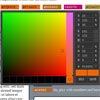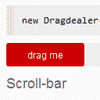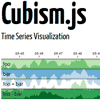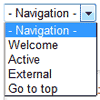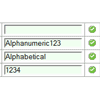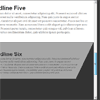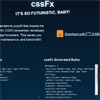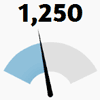getUserMedia.js is a cross-browser shim for the getUserMedia() API (a part of WebRTC) that supports accessing a local camera device from inside the browser. Where WebRTC support is detected, it will use the browser's native
getUserMedia()implementation, otherwise a Flash fallback will be loaded instead.
Screenshot
Notes
One-time permission requests
In previous versions, we created a getUserMedia() instance to check for feature support, then created a separate instance for usage. This caused permissions to use a device to be requested twice. In 1.x, we simply re-use the original instance so we require minimal action from the user.
Support for a new noFallback option
As more and more browsers begin landing stable implementations of getUserMedia, you may wish to have the option to turn off our Flash fallback feature. This can now easily be done by passing noFallback: true in our options. Check out face-detection-demo/js/demo.js for where to place this. Alternatively, feel free to use lib/getUserMedia.noFallback.js for a version of the library with Flash support stripped out.
Compatibility with the latest implementations
Getting Started
As you can see in the demo, what the shim provides is more than enough to create interactive applications that can relay device pixel information on to other HTML5 elements such as the canvas. By relaying, you can easily achieve tasks like capturing images which can be saved, applying filters to the data, or as shown in the demo, even performing tasks like facial detection.
The shim currently works in all modern browsers and IE8+.
Walkthough
Getting the shim working is fairly straightforward, but you may be interested in checking out the sample application in face-detection-demo/demo.html for further information. First, include the getusermedia.js script in your page. Below we're using the minified version built by the grunt.js build process.
<script src="dist/getUserMedia.min.js"> </script>Next, define mark-up that we can use as a container for the video stream. Below you'll notice that a simple div has been opted for (as per our demo). What will happen when we initialize the shim with it is we will either inject a video tag for use (if WebRTC is enabled) or alternatively an object tag if the Flash fallback needs to be loaded instead. Whilst most modern browsers will support the video tag, there is no reason to be using it here if your only interest is relaying the video data for further processing or use elsewhere.
<div id="webcam"></div>Calling the shim is as simple as: getUserMedia(options, success, error); where options is an object containing configuration data, success is a callback executed when the stream is successfully streaming, and error is a callback for catching stream or device errors.
We use the configuration object (options in the above) to specify details such as the element to be used as a container, (e.g webcam), the quality of the fallback image stream (85) and a number of additional callbacks that can be further used to trigger behaviour. Callbacks beginning with on in the below example are Flash-specific callbacks. If you don't need to use Flash, feel free to exclude them from your code.
// options contains the configuration information for the shim. // It allows us to specify the width and height of the video // output we're working with, the location of the fallback swf, // events that are triggered onCapture and onSave (for the fallback) // and so on. var options = { "audio": true, "video": true, // the element (by id) you wish to use for // displaying the stream from a camera el: "webcam", extern: null, append: true, // height and width of the output stream container width: 320, height: 240, // the recommended mode to be used is // 'callback', where a callback is executed // once data is available mode: "callback", // the flash fallback URL swffile: "fallback/jscam_canvas_only.swf", // quality of the fallback stream quality: 85, // a debugger callback is available if needed debug: function () {}, // callback for capturing the fallback stream onCapture: function () { window.webcam.save(); }, // callback for saving the stream, useful for // relaying data further. onSave: function (data) {}, onLoad: function () {} };Below is a sample success callback taken from the demo application, where we update the video tag we've injected with the stream data. Note that it's also possible to capture stream errors by executing calls from within video.onerror() in the example.
success: function (stream) { if (App.options.context === 'webrtc') { var video = App.options.videoEl; var vendorURL = window.URL || window.webkitURL; video.src = vendorURL ? vendorURL.createObjectURL(stream) : stream; video.onerror = function () { stream.getVideoTracks()[0].stop(); streamError(); }; } else { // Flash context } }At present the error callback for getUserMedia() is fairly simple and should be used to inform the user that either WebRTC or Flash were not present or an error was experienced detecting a local device for use.
There are also a number of other interesting snippets in demo.js, such as getSnapshot() for capturing snapshots:
getSnapshot: function () { // If the current context is WebRTC/getUserMedia (something // passed back from the shim to avoid doing further feature // detection), we handle getting video/images for our canvas // from our HTML5 <video> element. if (App.options.context === 'webrtc') { var video = document.getElementsByTagName('video')[0]; App.canvas.width = video.videoWidth; App.canvas.height = video.videoHeight; App.canvas.getContext('2d').drawImage(video, 0, 0); // Otherwise, if the context is Flash, we ask the shim to // directly call window.webcam, where our shim is located // and ask it to capture for us. } else if (App.options.context === 'flash') { window.webcam.capture(); App.changeFilter(); } else { alert('No context was supplied to getSnapshot()'); } }Performance
The shim has been tested on both single-frame captures and live video captures. As expected, native getUserMedia() works absolutely fine when pushing video content to canvas for real-time manipulation. The fallback works fine for single-frame, but as live frame manipulation requires capturing a frame from Flash and mapping it onto canvas every N milliseconds, an observable 'stutter' may be experienced here. I'm working on ways to optimize this further, but for now, as long as you aren't doing anything too intensive, the shim should work fine for a number of use cases.
Credits
- getUserMedia() shim, demos: Addy Osmani
- Workarounds for multi-bar issues, Firefox nightly support: Franz Enzenhofer
- Flash webcam access implementation: Robert Eisele
- Glasses positoning and filters for demo: Wes Bos
- Little fix for IE9: Rodrigo Ferreira de Souza
Spec references
Alternatives
- getUserMedia module targeted at evergreen browsers.
License
Copyright (c) 2012-2014 addyosmani
Licensed under the MIT license.







